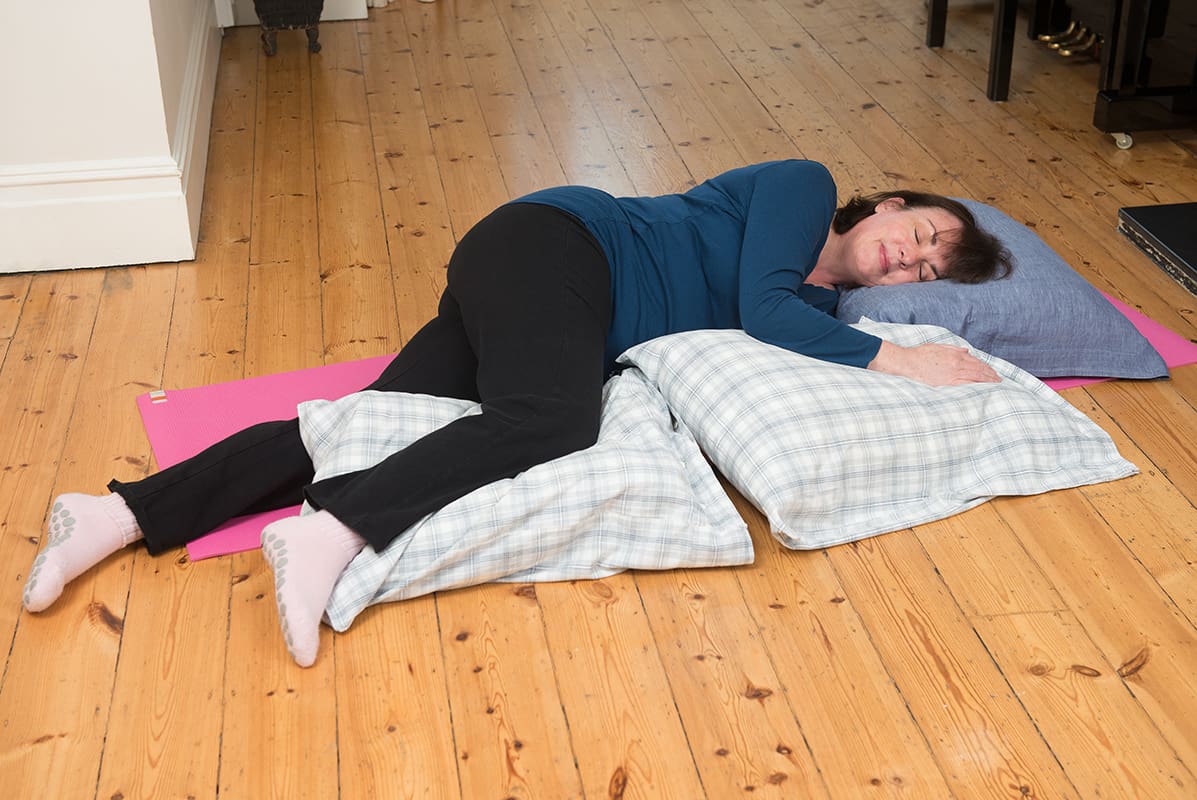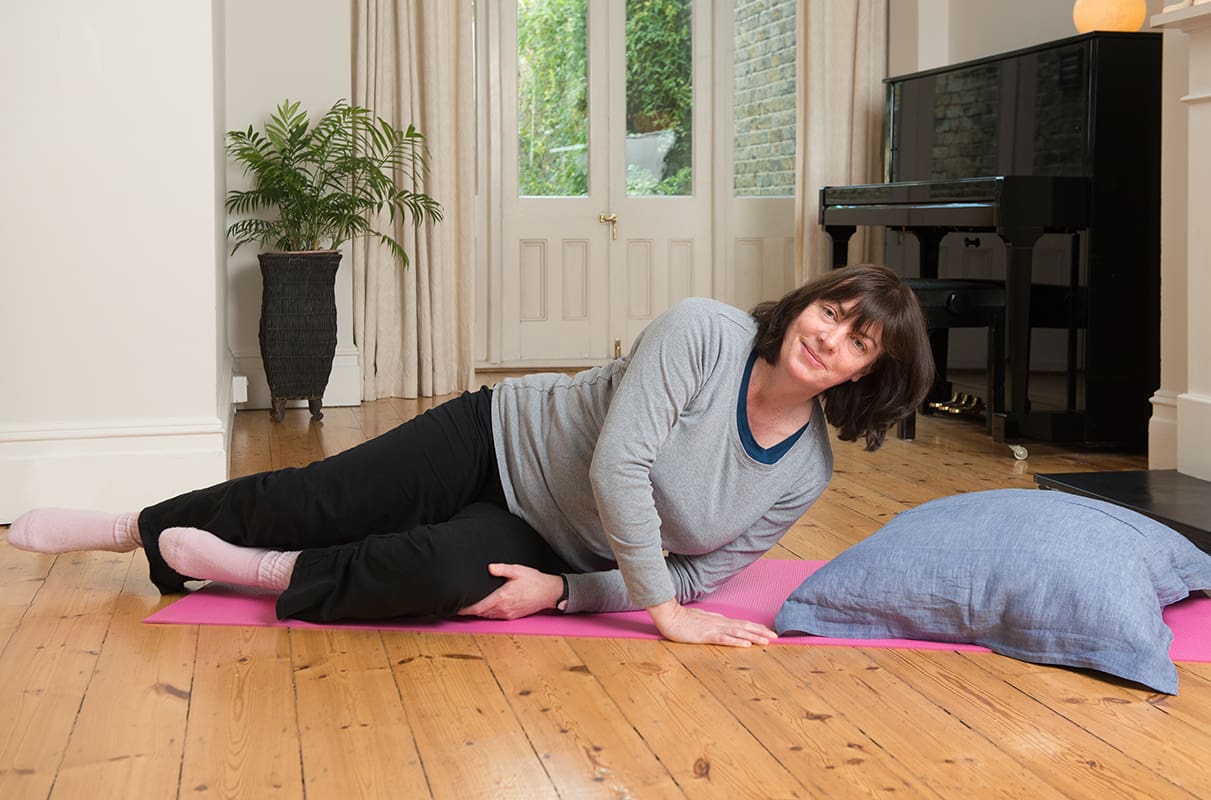When you have back pain it is not easy to find the one sleeping position that will keep you comfortable for several hours. You may have been used to sleeping on your abdomen, only to find recently that this increases your lower back pain. Even when lying on your back or side, you wake up with pain at night and feel stiff in the morning. Back pain is difficult enough as it is, so if your sleep suffers as a result, you may feel even more miserable. This blog gives a few suggestions about what to do for your back before going to bed, and shows which sleeping position has been found most comfortable by other people with back or neck pain.
Before going to bed
What you do in the last hour before bedtime is important, as you cannot expect the body to relax when the mind is in overdrive, and vice versa. I am sure you have read somewhere to eliminate screens before bedtime. This is of course advice for everyone, but because back pain can be exacerbated by stress, it is especially important for back sufferers to avoid anything that may cause stress. Instead, choose a warm bath or shower, some gentle yoga appropriate for back pain (such as in this previous blog), or another relaxing activity to relax your body and mind. Once this has become a habit it will be a wonderful ritual.
Reading in bed:
If you like reading in bed, you may have discovered your back is not so happy with you sitting up in bed to do this, as the mattress is too soft and your lower back curves too much. It is better to read while lying on the side, properly supported as described below. In winter, combine this with some heat (an old fashioned hot water bottle, why not) on the lower back.
Before going to sleep:
Right before going to sleep — especially if you can’t sleep on your back easily — lie on your back for 5 to 10 minutes with your legs bent. This position naturally relaxes the back and undoes some of the day’s tensions. While lying on your back, try simple breath awareness:
-Simply observe the breath going in and out of the nostrils.
-Feel how your abdomen moves when you breathe.
-Notice how you can relax a little more every time you exhale.
To trigger the relaxation response, you can also try the “4-6 breathing technique”: with this breathing technique you extend the exhalation by counting 4 counts for the inhalation and 6 counts for the exhalation. Just do this for a few minutes before going back to natural breathing. Never force the breath; when you do a breathing technique it should still feel natural.
Best sleeping position when you have lower back pain:
Sleeping on the abdomen overarches the lower back and can increase lower back pain. If you must sleep on your abdomen, place a pillow under your abdomen. Much better, however, is to sleep on your back. Most people with lower back pain find sleeping on the back with the legs on a cushion most comfortable: bent legs tend to be more relaxing for the lower back. When you are lying on your back, either sleep without pillow or if that is uncomfortable, use a pillow under the head. If you find sleeping on the back impossible, you may like the position on the side that is described below.
Best sleeping position when you have neck pain:
For neck pain, sleeping on your back without pillow can be very good. However, if you like to sleep on the side, make sure that your pillow is high enough. The pillow should fill the space between the mattress and the head and neck, so the neck vertebrae can be in line with the rest of the spine and feel supported along with the head. For the shoulders it may be helpful to rest the top arm on a cushion as well.
Best sleeping position when you have sacroiliac pain
Lower back pain can sometimes be caused by instability in the sacrum. If this is the case and you like to sleep on your side, use a cushion under the top leg as in the picture above. The idea is to keep the hip bones “stacked” above each other.
Coming out of bed:
To come out of bed, or indeed to come up at any time from a lying position, first roll over to one side and then push yourself up with the top arm. This will allow the arms to do the work and keep the back relaxed.
For more tips about keeping your back safe during tasks such as lifting, cooking, putting shoes etc. do subscribe to this blog and you will get the “keep your back safe at home guide” for free.
Namaste






